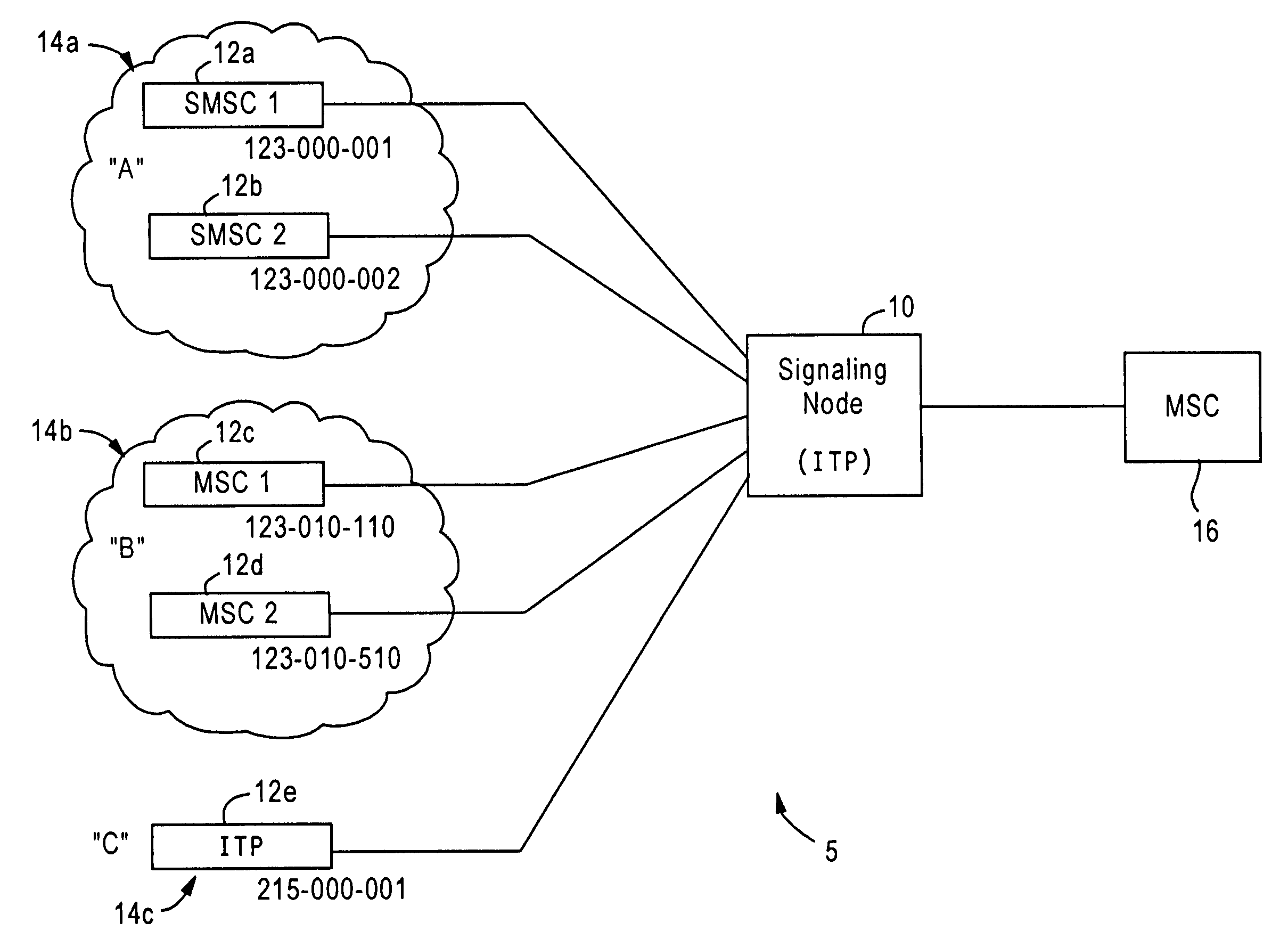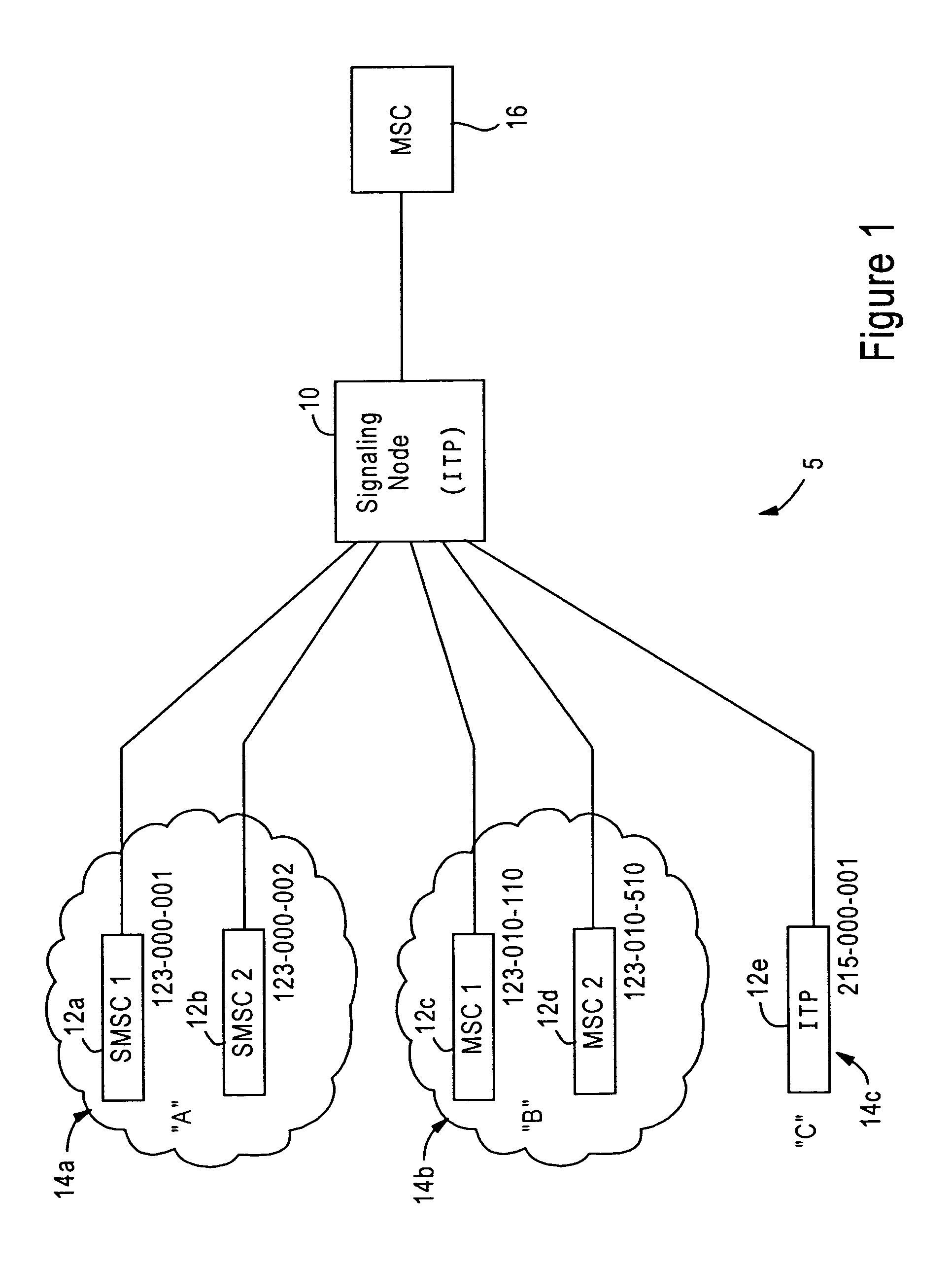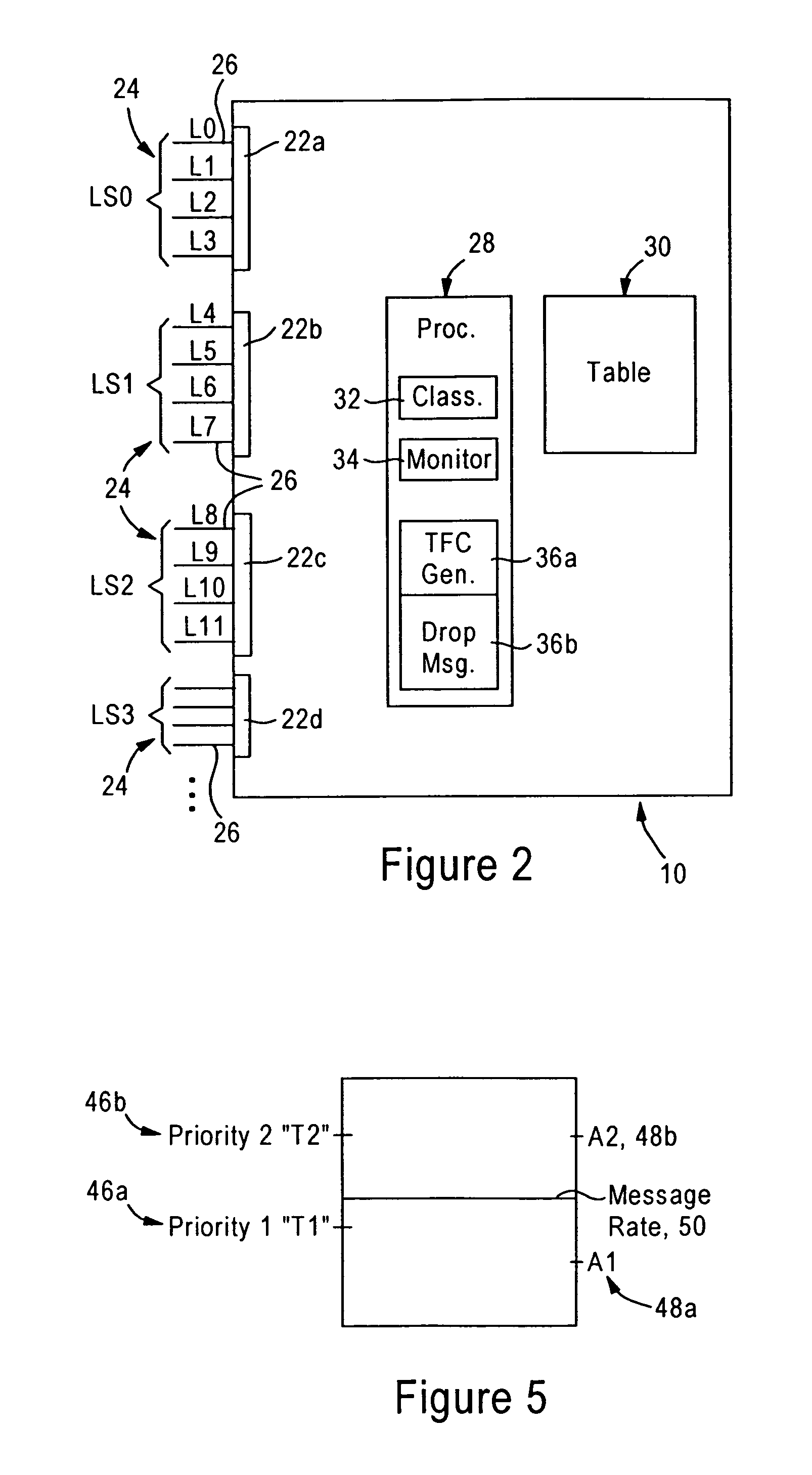Arrangement for controlling congestion in an SS7 signaling node based on packet classification
a technology of packet classification and signaling nodes, applied in data switching networks, interconnection arrangements, digital transmission, etc., can solve the problems of wasting bandwidth resources on signaling links, unfairly penalizing originating nodes that did not, and onset of congestion, so as to reduce congestion thresholds and minimize overall network congestion.
- Summary
- Abstract
- Description
- Claims
- Application Information
AI Technical Summary
Benefits of technology
Problems solved by technology
Method used
Image
Examples
Embodiment Construction
[0024]FIG. 1 is a block diagram illustrating an SS7 signaling network 5 having an SS7 signaling node 10 configured for enforcing user-selected bandwidth policies based on controlling traffic from originating node groups, according to an embodiment of the present invention. The SS7 signaling node 10, implemented for example as a signaling transfer point in a public switched telephone network, is configured for enforcing bandwidth allocation policies, established by a user, for existing PSTN based SS7 networks (e.g., frame relay based SS7 networks), as well as Internet Protocol (IP) based SS7 networks. Hence, the signaling network node 10 may be implemented as an SS7 network node that relies upon transport of Message Transfer Part (MTP) 3 messages across an IP-based network providing a guaranteed quality of service; such guaranteed quality of service can be provided in an IP based network based on setting prescribed values to type of service (TOS) fields within the IP headers. An exem...
PUM
 Login to View More
Login to View More Abstract
Description
Claims
Application Information
 Login to View More
Login to View More - R&D
- Intellectual Property
- Life Sciences
- Materials
- Tech Scout
- Unparalleled Data Quality
- Higher Quality Content
- 60% Fewer Hallucinations
Browse by: Latest US Patents, China's latest patents, Technical Efficacy Thesaurus, Application Domain, Technology Topic, Popular Technical Reports.
© 2025 PatSnap. All rights reserved.Legal|Privacy policy|Modern Slavery Act Transparency Statement|Sitemap|About US| Contact US: help@patsnap.com



